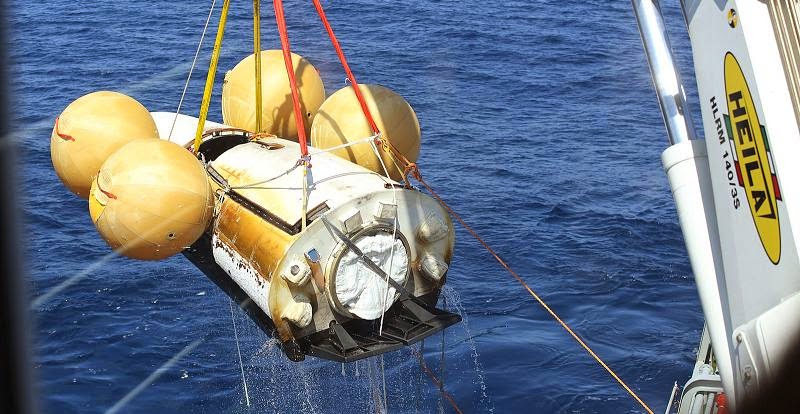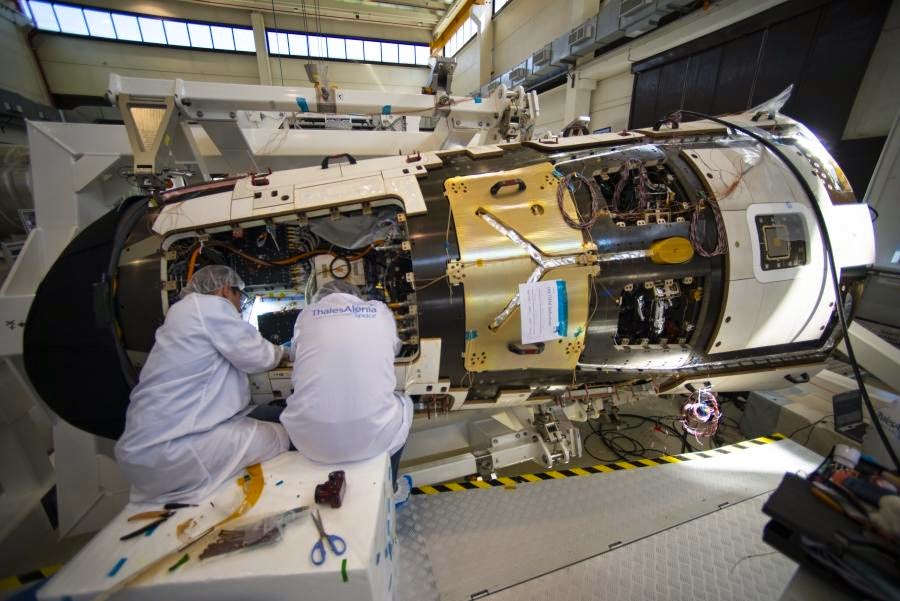
On Feb. 11, ESA’s Intermediate eXperimental Vehicle (IXV), atmospheric reentry demonstrator, successfully completed its first test flight, ending with a splashdown into the Pacific Ocean and one aerospace company is bursting with pride over the flawless test.
“The success of this mission is a source of great pride for us. Thanks to the data collected during the flight, we are paving the way for the development of new-generation reentry vehicles in Europe,” Sandrine Bielecki, Thales Alenia Space spokesperson told me.
“The success of this mission is a source of great pride for us. Thanks to the data collected during the flight, we are paving the way for the development of new-generation reentry vehicles in Europe,” Sandrine Bielecki, Thales Alenia Space spokesperson told me.
Made in Europe
Thales Alenia Space (TAS), a French-Italian joint venture is the prime contractor for IXV, heading a consortium of partners from European industry, research centers and universities. Italy’s significant participation in the project is strongly supported by the Italian Space Agency (ASI).
“Thales Alenia Space took the leadership of the project in December 2009. The IXV was then delivered to ESA in September 2014. Several hundreds of engineers and technicians spread all across Europe worked to the project. Among those, about 120 TAS people were involved,” Bielecki revealed. “The industrial organization of IXV was quite complex. Thales Alenia Space managed a team of about 40 entities - industries, universities, research centers - of 10 countries: Italy, France, Switzerland, Spain, Belgium, Ireland, Portugal, Germany, the Netherlands, and USA. Italy is providing the largest share of funding.”
"With this mission, France and Europe confirm their excellence in space exploration, one of the major challenges facing us in the years ahead," said Geneviève Fioraso, French Minister of Higher Education and Research.
The company is Europe's largest satellite manufacturer and one of the main suppliers to the International Space Station. TAS built the Multi-Purpose Logistics Modules, which was used to transport cargo inside the Space Shuttle orbiters. They also built several modules for the ISS.
Flawless run
IXV lifted off at 13:40 GMT, from Europe’s Spaceport in Kourou, French Guiana atop a Vega rocket. It separated from Vega at an altitude of 340 km and continued up to 412 km. Then, it then began the reentry phase, during which experimental data was acquired via the instruments on the vehicle. The IXV reached a speed during its atmospheric reentry of approximately 7.5 km/sec at an altitude of 120 km, typical of a reentry from low Earth orbit, similar of those of the International Space Station.
 |
| Thales Alenia Space scientists work on ESA’s Intermediate eXperimental Vehicle. Credit: thalesgroup.com |
“During Flight Phase, the IXV worked perfectly, as the ground segment did, implementing the whole flight program in line with the commanded maneuvers and trajectory prediction,” Bielecki said.
As it descended, the five-meter-long, two-ton craft maneuvered to decelerate from hypersonic to supersonic speed. The entry speed of 7.5 km/s at an altitude of 120 km created the same conditions as those for a vehicle returning from low Earth orbit.
IXV glided through the atmosphere before parachutes deployed to slow the descent further for a safe splashdown in the Pacific Ocean.
At the Advanced Logistics Technology Engineering Center (ALTEC) Mission Control Center in Turin, Italy, specialized technicians followed the mission in real time, coordinating the ground stations during IXV's flight and the naval recovery operations after splashdown.
Bielecki underlines the importance of the test flight and its uniqueness for Europe. “A huge effort was made and our company is now the European benchmark in this sector. It must be noted that a lifting body shape, like the one IXV features, was never flown by Europe,” she said. “Thales Alenia Space plans to further develop its expertise via the European program PRIDE, approved at the Ministerial Conference in December 2014, marking another significant step forward in the understanding the atmospheric re-entry phenomena and in developing critical technologies for reentry systems.“
Destination deep space
Thales Alenia Space is also engaged in developing numerous probes that study other planets in our solar system. The most significant is the next Martian spacecraft made in Europe. ExoMars mission, being built in partnership with Russia is a major challenge for the French-Italian company.
“The ExoMars program is a great scientific challenge and Thales Alenia Space, with a synergistic role between the Turin and Cannes plants, is prime contractor of the Program, looking after the entire design of the two missions (2016 – 2018),” Bielecki noted. “A this time, in Thales Alenia Space Plant in Turin, highly specialized technicians and engineers are integrating the EDM (Entry Descent Module) which, together with the TGO (Trace Gas Orbiter) orbiting module, currently undergoing integration at the Thales Alenia Space plant in Cannes, will make up the vehicle that will land on Mars during the 2016 mission.”
The company is participating in other ESA projects like Euclid, for dark energy and dark matter exploration, Bepi Colombo to explore Mercury, the Service Module of the Orion Crew Transportation System, and even the ISS Exploitation Programme.






Comments